British Typhoons and Swedish Gripens are deployed to Malbork, Poland, as part of enhanced air policing measures. 15 Russian aircraft were intercepted by the Typhoons across only six days.
Photographers Rich Cooper and Andy Donovan flew with the aircraft across two photo sorties on Jun. 11, 2025, where they were also joined by Polish Air Force F-16s and MiG-29s. A Polish Airbus C-295M acted as the photo ship.
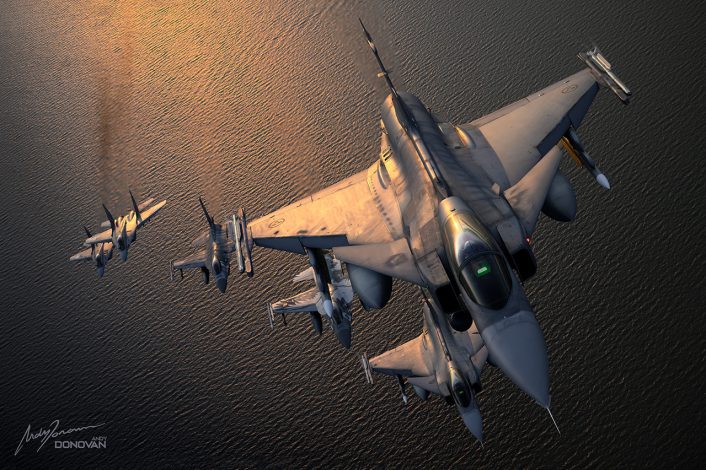
In the days immediately surrounding these photo flights, and even on the day itself, the Typhoon and Gripen crews were put to the test by a large number of Russian aircraft which transited close to NATO airspace. Two intercepts took place on Jun. 7, with Typhoon FGR4s launched and tasked with identifying and shadowing what turned out to be Antonov An-30 ‘87 Black’, NATO reporting name ‘Clank’.
A week on Operation Chessman.
RAF Typhoons show their might intercepting Russian aircraft protecting NATO airspace, and the RAF demonstrates, with its allies #WeAreNATO
Read more pic.twitter.com/ASqQ7XGQCa
— Royal Air Force (@RoyalAirForce) June 15, 2025
This An-30 still carries the markings of the Open Skies mission, which had previously seen the aircraft operate reconnaissance flights across Europe prior to Russia’s withdrawal from the agreement.
After this intercept, the Typhoons were re-tasked in flight to shadow an Ilyushin Il-20M ‘Coot-A’ electronic and communications intelligence aircraft. The following day, two Typhoons launched to identify two unknown contacts leaving the airspace of Kaliningrad, a Russian exclave. The radar contacts were soon visually confirmed as armed Sukhoi Su-24M Fencer strike aircraft, one of which proceeded to conduct low passes over the USNS William MacLean logistics vessel.
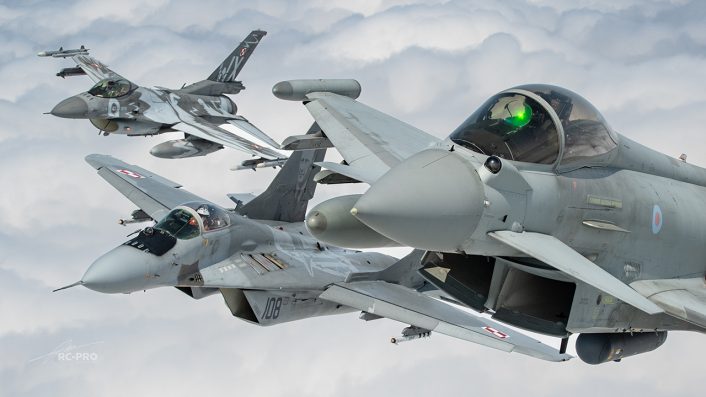

Both Monday Jun. 9 and Tuesday Jun. 10 saw another interception of an An-30 and an Il-20M on each day. On the latter, the Typhoons were supported with in flight refueling from a German Air Force Airbus A400M before being re-tasked to track a Tupolev Tu-142 Bear-F maritime patrol aircraft, based on the Tu-95 Bear bomber. The Tu-142 had its own escort of two armed Sukhoi Su-27 Flanker B fighters. Jun. 11 saw another intercept of an An-30, then on Jun. 12 two more Su-24 Fencers were intercepted prior to a re-tasking to intercept another Il-20M.
A pilot deployed with the Royal Air Force contingent, which comprises jets from II (AC) Squadron based at RAF Lossiemouth, remarked: “This was an extremely busy scramble. Over the past few weeks, we have become accustomed to intercepting one aircraft and then re-tasked to intercept a second. But intercepting a third aircraft in the same sortie is a first for me.” The Typhoons have been deployed to Malbork and active on the BAP mission since Apr. 1.
Swedish Air Force Gripens supported an unspecified number of these sorties, with F 21 based at Luleå sending 120 personnel to support six jets for Sweden’s first ever Baltic Air Policing mission. Speaking when the deployment was announced, Colonel Jörgen Axelsson, the Swedish Air Force’s Chief of Operations, commented: “By contributing to NATO’s deterrence and defence, our Air Force enhances Swedish and NATO’s security. This is an important step in our interoperability and another step for the Swedish Air Force to become fully integrated into NATO’s Air Defence”.
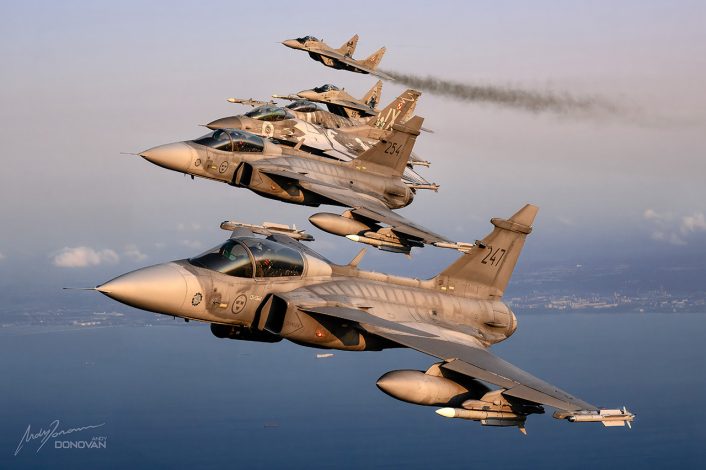

The Gripens were armed while taking part in the photo sorties, offering a look at the aircraft’s loadout for the mission. Each aircraft carries an IRIS-T infrared guided air to air missile on the wingtip hardpoints, with longer range Meteor radar guided missiles on wing pylons. RAF Typhoons would likely also carry the Meteor, though use the AIM-132 Advanced Short Range Air to Air Missile (ASRAAM) for closer engagements.
Some Gripens are carrying a LITENING targeting pod. While most commonly associated with air to ground mission sets, reconnaissance and targeting pods have become common to see on air policing aircraft as they allow for long range identification and tracking of target aircraft.
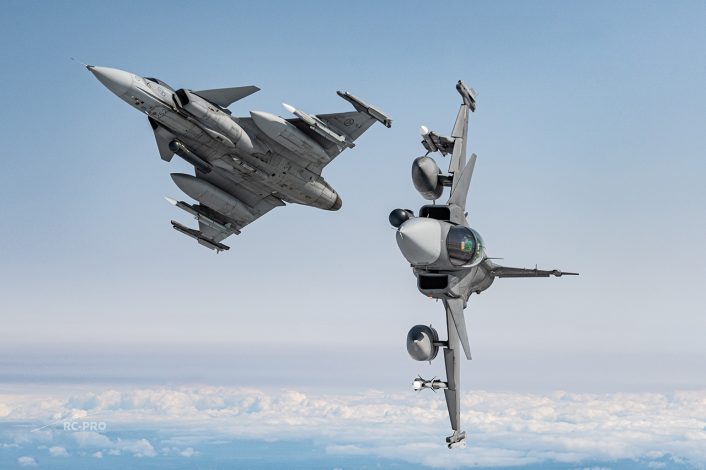

Polish Jets
As well as hosting deployed aircraft as part of the enhanced Baltic Air Policing mission, Malbork is also an active quick reaction alert base for the Polish Air Force. The sole remaining base operating the MiG-29, the venerable Soviet-designed aircraft type is expected to be retired imminently. Only a few jets and pilots remain combat ready.
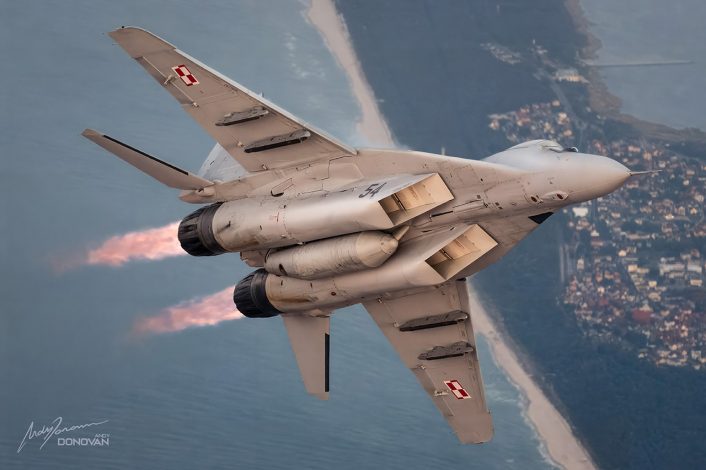

Retired Polish MiG-29s have been earmarked for potential donation to Ukraine, but Polish authorities are reluctant to let the aircraft go until deliveries of their F-35s begin. Poland’s first fifth generation jet took to the air at the end of 2024, and deliveries are expected during 2026.
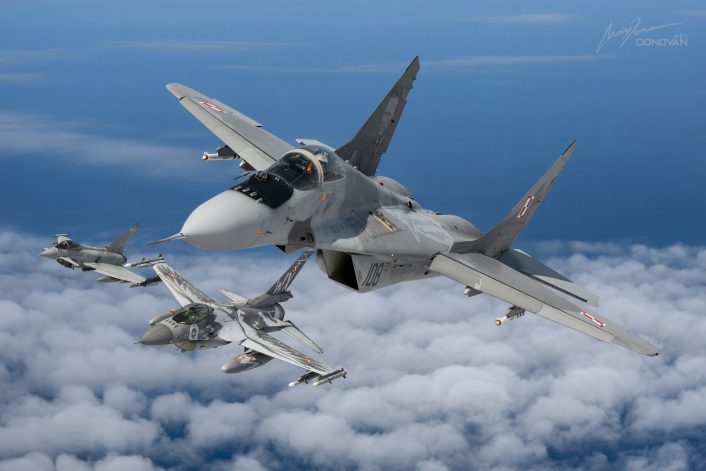

Polish F-16s from Poznań also joined the action, with the sight of Polish and RAF jets flying in formation during air defence missions in the 85th anniversary year of the Battle of Britain sparking some moments of reflection. Many Polish Air Force units can still trace their origins back to Polish-crewed fighter squadrons that helped defend British skies in 1940 and beyond.
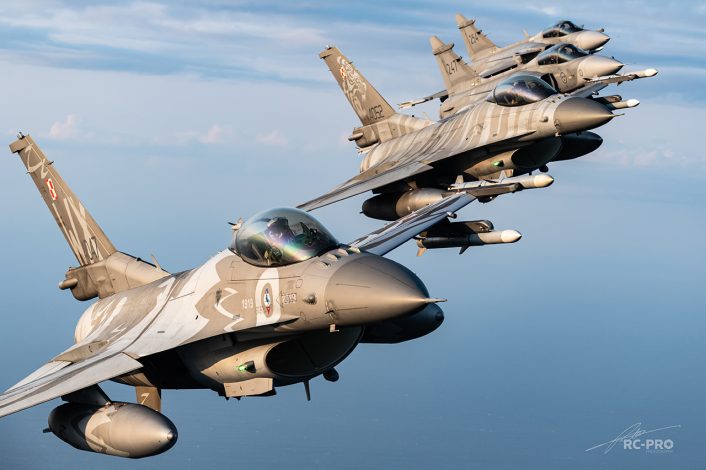

Ordered in 2003 and first delivered in 2006, Poland operates 36 F-16C and 12 F-16D aircraft of the Block 52+ standard. They are one of a handful of nations who use conformal fuel tanks (CFTs) on their F-16s, although they are not almost permanently fitted to the airframes as they are in some other air arms.
The F-16 is the most numerous fighter aircraft in the Polish inventory and now makes up the bulk of the nations’ air to air and strike fighter forces. A small number of MiG-29s, as mentioned above, and Su-22s also remain in service – the latter due to be withdrawn very shortly. In 2023, the Polish Air Force took delivery of their first KAI FA-50 light multirole fighters.
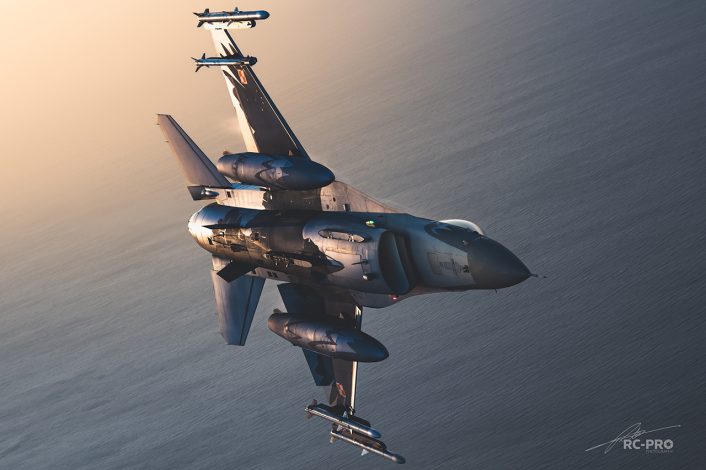

Many thanks to Rich Cooper and Andy Donovan for sending us these incredible images which allowed this story to be told in such detail.
Source link
[aviation news]
Share this content:


